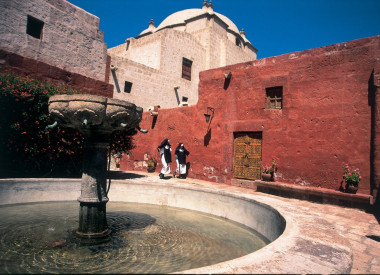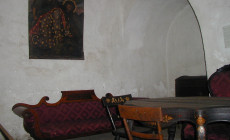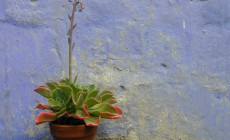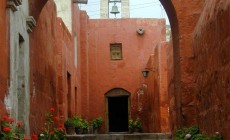-
Latin America
Latin America
- Countries (hidden space)
- Galapagos & Ecuador
- Guatemala
- Mexico
- Panama
- Peru
- Popular Attractions
- Machu Picchu
- Inca Trail
- Easter Island
- Galapagos Islands
- Patagonia
- Rio de Janeiro
- Iguazu Falls
-
Africa
Africa
- Spacer Africa
- South Africa
- Zimbabwe
- Popular Attractions
- Cape Town
- Okavango Delta
- Sossusvlei Dunes
- Victoria Falls
- The Kruger
- The Garden Route
- Masai Mara
-
Asia & Middle East
Asia & Middle East
- Asia
- Borneo (Malaysia)
- Cambodia
- India
- Japan
- Middle East
- Jordan
- Spacer Asia
- Laos
- Sri Lanka
- Uzbekistan
- Vietnam
- Popular Attractions
- Taj Mahal
- Lion Rock (Sigiriya)
- Angkor Wat
- Ha Long Bay
- Kyoto
- Petra
-
Destinations
- Latin America
- Argentina
- Bolivia
- Brazil
- Chile
- Colombia
- Costa Rica
- Galapagos & Ecuador
- Guatemala
- Mexico
- Panama
- Peru
- Asia
- Borneo (Malaysia)
- Cambodia
- India
- Japan
- Laos
- Sri Lanka
- Uzbekistan
- Vietnam
- Middle East
- Jordan
- Southern & East Africa
- Botswana
- Kenya
- Namibia
- South Africa
- Zimbabwe
- Contact Us
-
About
About
Llama Travel provides high quality holidays at the lowest possible prices.
99% recommend us Lower prices - guaranteed Financially protected by ATOL
This is the main tourist attraction in Arequipa, and undoubtedly one of the most interesting colonial buildings in Peru. The convent was shrouded in secrecy until the majority of it was opened to the public in 1970. However, a part of the complex is still used by nuns and cannot be visited. There are, in fact, still a small number of nuns still in Santa Catalina, and some novices. The convent is extensive, covering a whole city block, with an area of 20,426 square metres, and is often described as a city within a city. This is not an unfair description, with the convent having streets and squares named after Spanish cities, although this is a recent creation, as are the bright colours of the walls. Initially, the complex was unpainted, leaving it the colour of sillar. The convent has been shaken by the numerous earthquakes to hit Arequipa, and several areas have suffered damage. However, the buildings have been reconstructed, and are a delight to wander round.
The convent was founded in 1579 by María de Guzmán, a very rich Creole widow, who dedicated it to Santa Catalina of Siena. The history of the convent is fascinating, and many of the nuns living in Santa Catalina failed to live up to the vows of poverty that are usual. In fact, coming from wealthy Spanish families, many of the nuns came with up to four servants to accompany them. The dowry that had to be given by the most important nuns, who wore black veils, was 2,400 silver coins, equivalent to US$50,000 today. The nuns also had to bring 25 listed items, including a statue, a painting, a lamp and clothes. In the case of the wealthiest nuns, these included the finest English china and wonderful silk curtains and rugs. All these nuns entered because of the family tradition that the second son or daughter had to enter religious service. Although it was possible for poorer nuns to enter the convent without paying a dowry, it can be seen from the cells that most of the nuns were very wealthy. The largest cells have a large main room for the nun’s residence, a room for the servants, a kitchen, a terrace and even a guestroom, which was used by other nuns in Santa Catalina after a party. When a nun died, the cells were sold to other nuns entering the convent.
In addition to the stories of outrageous wealth, there are tales of nuns becoming pregnant, and amazingly of the skeleton of a baby being discovered encased in a wall. This, in fact, did not happen in Santa Catalina, although there are rumours of it having taken place in the nearby Santa Rosa convent.
Once inside the convent, a nun could never leave, and was able to receive visitors for only about 15 minutes once a week. Novices entered the convent at 12, and lived in one small cloister until the age of 16. They were not allowed to talk among each other, and had to spend their entire days in their cells, praying, apart from one hour in the morning when they went to mass. At the age of 16 the novices could decide whether to renounce religious service and return to the outside world or whether to stay in the convent. It is testament to the power of the family that, apart from one exception, no novice ever left the convent. This exception was Francisca Pizarro, the niece of the conquistador Francisco Pizarro.
In 1871, the mother superior, María Josefa Cadena y Pastor, eliminated the different categories of nun, and also abolished the individual cells. At this time all the nuns started to sleep in one large dormitory, with beds separated only by curtains.
The convent also houses a gallery with many paintings of the Cusqueña school. It takes an hour or two to wander round to convent, and the many streets and squares present wonderful photo opportunities. Very worthwhile is taking a tour by one of the excellent guides at the entrance. Given the extensive history and stories of the convent, much will be missed without one.





